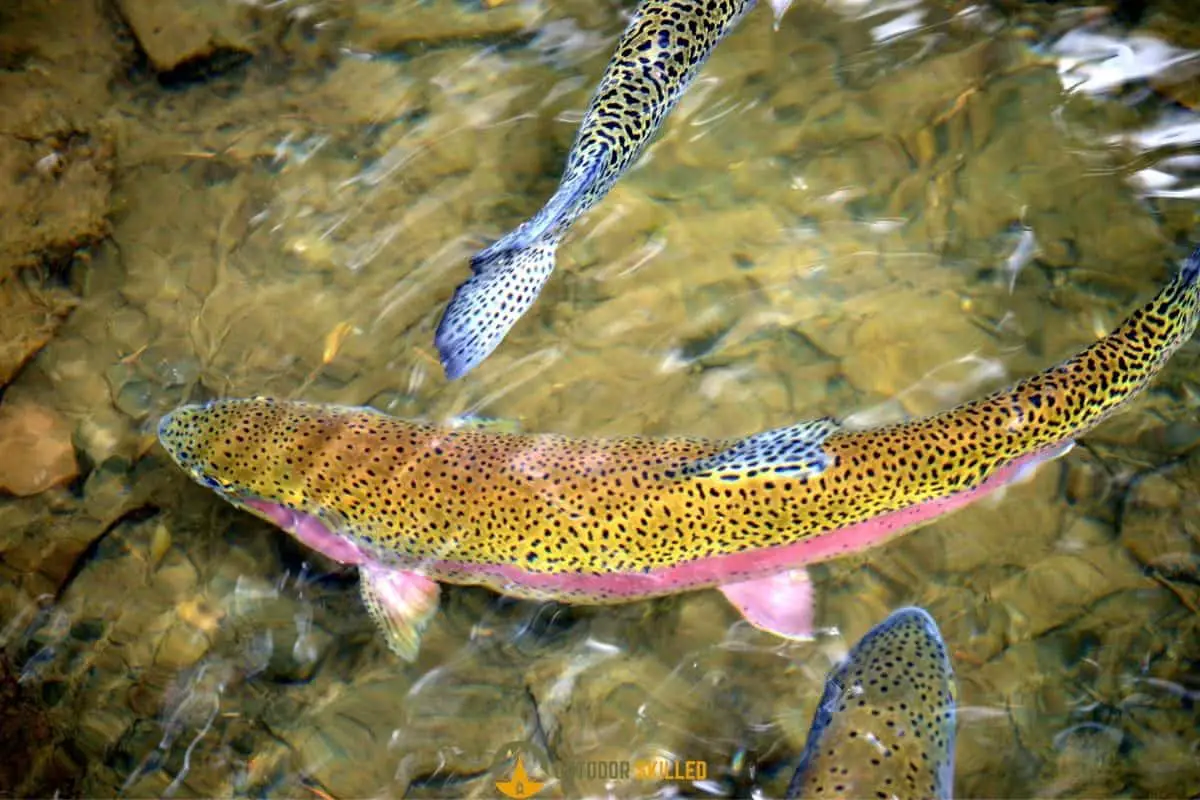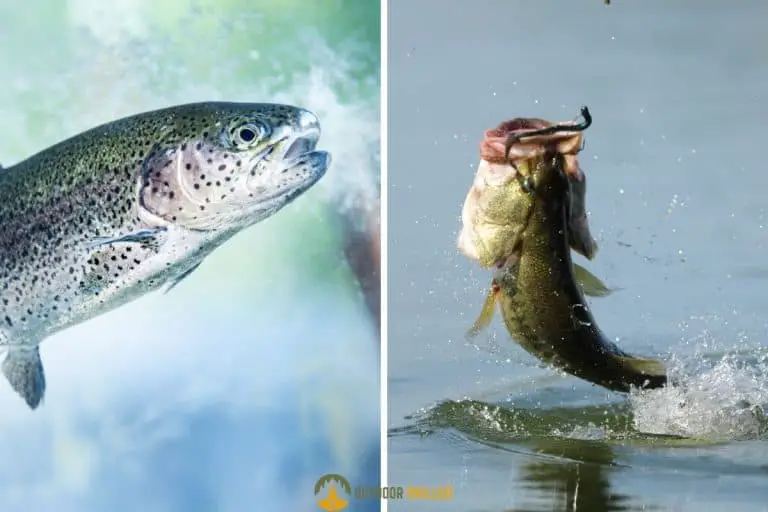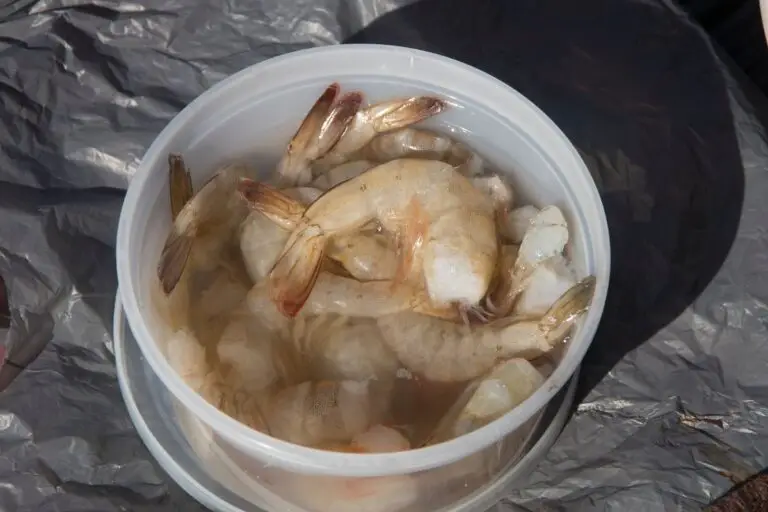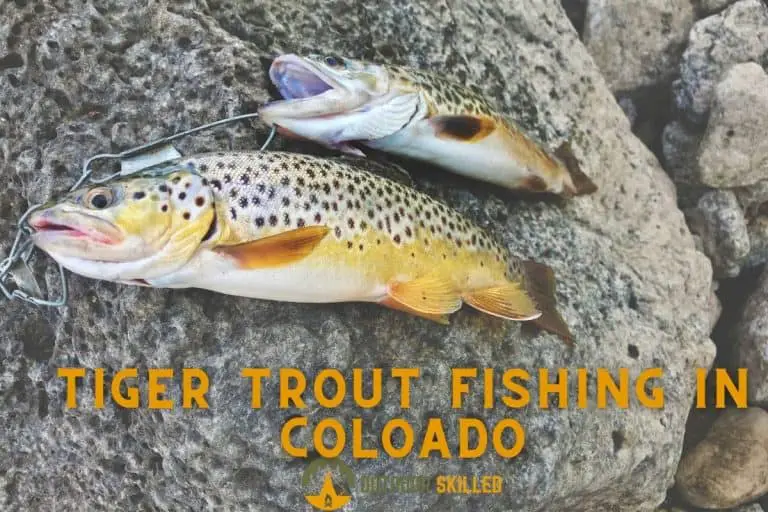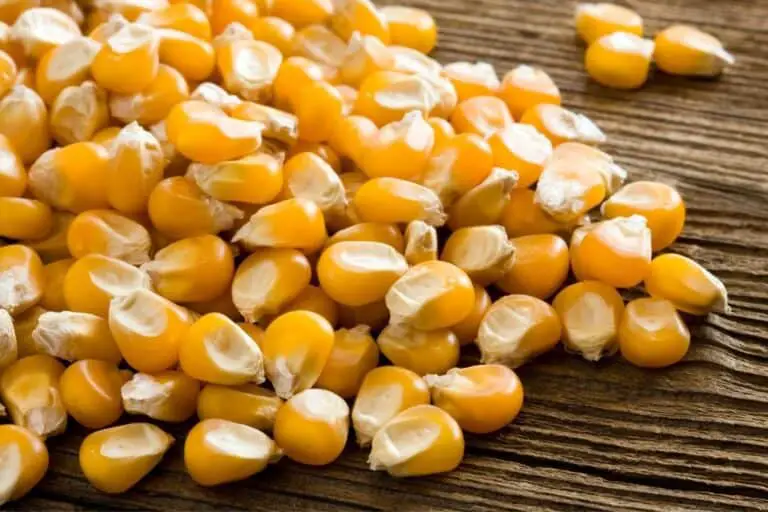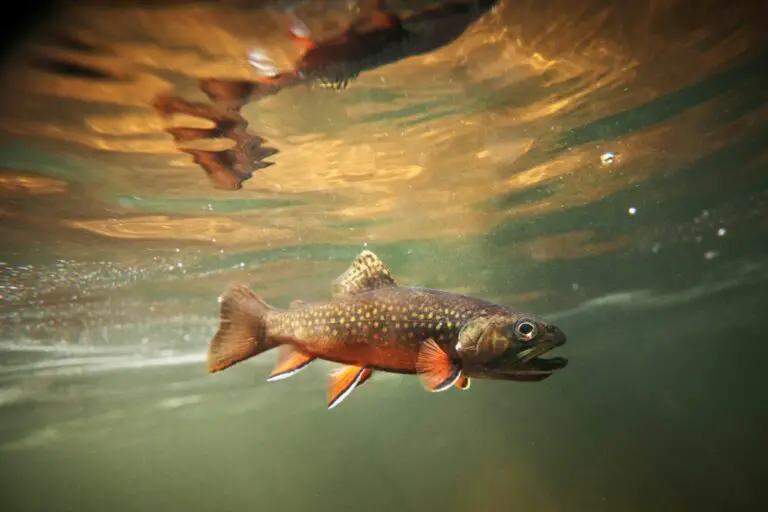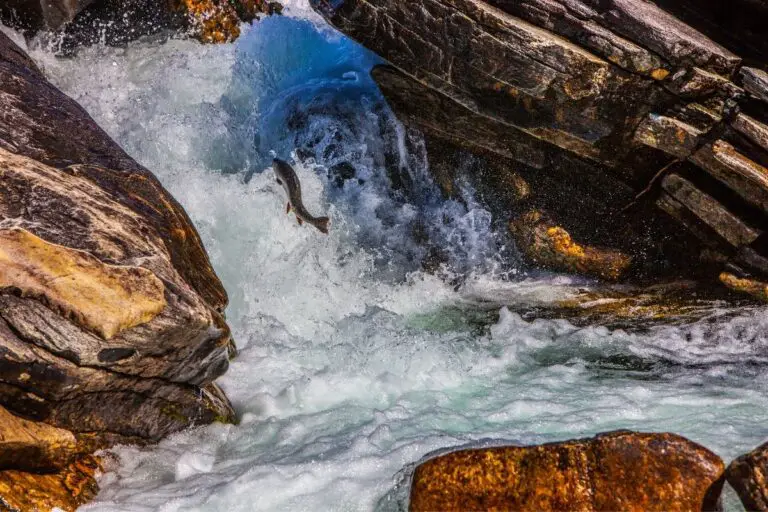Why Do Trout Die So Fast? The Secrets to Handling Trout Correctly
Since catch-and-release trout fishing is popular, some anglers ask several questions regarding the safety of the caught trout, especially after many trouts have been found dead in several lakes, is this really the anglers’ fault, or are trout that fragile and Trout really die so fast?
Trout die so fast because they’re fragile species. Their internal organs and gills are delicate, and improper holding can damage them. Also, it gets exhausted faster than other game fish. The more you fight, the more lactic acid builds up in its body, and you could kill it even after it swims away.
Continue reading to learn more about why trout are fragile and how to handle them correctly so that they survive outside the water longer.
Table of Contents
Why Are Trout So Fragile?

There is no specific reason why trout are so fragile. It’s their nature and anatomy.
Their internal organs are sensitive, and a single squeeze from your hand can cause more damages than you can imagine. Their skin is also sensitive to the touch; holding them with dry hands can remove the slimy protection layer on it and make the fish prone to bacteria and infections.
It’s true that trout can put up a good fight, but the more they fight, the more lactic acid builds up in their body, which could kill them after a while. You may enjoy how they’re trying to work their way out of your lure, but you could be killing it without knowing.
Their tolerance to being out of water is low compared to other game fish, and they need to be back in the water as fast as possible to maintain a high survival rate. Being deeply hooked is also deadly to trout. Even if you saw it swimming away looking alright, it can die after a few minutes.
How Long Can Trout Survive Out Of Water?
Trout can survive out of water for a maximum of 30 seconds. The longer you keep it out of the water, the lower the survival rate after being released, especially if it had a long fight. If you had to take it out, release it back after 10 seconds to make sure it survives.
R.A. Ferguson and B.L. Tufts conducted a study that examined the amount of time a fish is exposed to air after being caught and found that every second matters. Fish that were exercised but then released without being held out of the water had an 88% survival rate. However, after 30 seconds of air exposure, that fell to 62%. It was just 28% after one minute.
The more a fish fights, the more tired it gets and the more lactic acid builds up in its body. This will lead the fish to die later, even though you’ve seen it swim away, apparently unharmed. Imagine holding your breath after a mile of running; it’s exhausting, isn’t it? It’s the same for trout.
You should be aware that trout caught in cold water have a higher probability of survival than trout caught in warm water. Never fish for trout as the water temperature rises above 68°F (20 °C). The higher the water temperature, the more stressed trout becomes, and the more likely it is that it will die after release.
How To Handle A Trout?

To keep trout alive and healthy, it is just as necessary to handle it as it is to release it. You must be careful not to accidentally injure it or inflict harm that will kill it, even if you watch it safely swimming away when you release it.
Follow these steps to ensure you’re not damaging trout when you catch it:
- Keep your fight short. It’s exciting to keep working with a game fish, but it’s not necessary if it kills it later on. So make sure to land it as soon as possible and release it once you’re done unhooking and measuring it.
- Use barbless hooks. They are much easier and faster to remove from the fish mouth, and they’re proven to cause less damage to it.
- Use a rubber net. It depletes the slime layer on the trout scales, which helps protect it from disease. Using knotted string or nylon nets can cause damage to scales, tails, and fins. Check out this excellent rubber net on Amazon.
- Quickly place trout in a rubber net. The sooner you get them in the net, the better. When you exhaust trout in the fight, lactic acid builds up in its body. This can cause the fish to die eventually, even after it manages to swim away.
- Keep trout in the water. The maximum time you’re allowed to take trout out of the water is 10 seconds before you need to get it back in. So it’s safer to do your measurement and take photos while it’s in the net underwater.
- Use a release tool to remove the hook. Long-nosed forceps are an easy and fast way to ensure that you remove the hook without cuts or any sort of damage. Be careful not to squeeze trout to keep it stable while removing the hook because this damages its internal organs. If it’s deeply hooked, it’s less damaging to cut the hook and leave it behind.
- Handle as little as possible with wet hands only. Wet hands are less likely to damage the protective slimy layer that helps protect the fish’s skin from disease.
- Handle it right for the pictures. Use both your hands to support it at the vent and the pectoral fins, don’t come near its gills, and don’t ever squeeze it for a better grip
- Point their nose into the water. It is important to oxygenate the trout and hold it until it gains power before releasing it. Don’t let go before it makes strong tail-swimming motions and attempts to wiggle out.
Outdoorskilled’s Favorite Picks for Trout Fishing
Trout can be tricky, but with the right gear, it can be a lot simpler and a lot easier. After testing dozens of rods, reels, lines, baits, and lures, here are our all-time, tried-and-tested picks for exceptional results with Trout.
The Okuma Celilo rod deserves to sweep my top spot for its 8’6″ model. If you like having extended casting (who doesn’t?), and lightweight rods with high-quality materials, this is the one that will provide your best trout fishing experience ever!
Moreover, it’s also affordable, so even if finances are tight, there’ll be no worries about being able to get yourself some new gear right away – just buy another couple of these babies before they run out!”

As for reels, the Pflueger President spinning reel is a great choice for anyone looking to get the most out of their fishing trip. With an affordable price and impressive features like graphite gears, this reel is the go-to option for all pro Trout Anglers.

As for lines, there’s no better option than the Berkley Vanish for Trout fishing. It’s strong, affordable, and invisible for Trout.

For bait, Scented baits do a much better job of attracting trout, and while you can make your own Scented baits, I believe everyone should at least try Powerbait’s scented baits to see how much of a difference they can make. I recommend testing out the Garlic Power Bait for Trout for yourself first.

Outdoorskilled’s Favorite Picks for Trout Fishing
Trout can be tricky, but with the right gear, it can be a lot simpler and a lot easier. After testing dozens of rods, reels, lines, baits, and lures, here are our all-time, tried-and-tested picks for exceptional results with Trout.
The Okuma Celilo rod deserves to sweep my top spot for its 8’6″ model. If you like having extended casting (who doesn’t?), and lightweight rods with high-quality materials, this is the one that will provide your best trout fishing experience ever!
Moreover, it’s also affordable, so even if finances are tight, there’ll be no worries about being able to get yourself some new gear right away – just buy another couple of these babies before they run out!”

As for reels, the Pflueger President spinning reel is a great choice for anyone looking to get the most out of their fishing trip. With an affordable price and impressive features like graphite gears, this reel is the go-to option for all pro Trout Anglers.

As for lines, there’s no better option than the Berkley Vanish for Trout fishing. It’s strong, affordable, and invisible for Trout.

For bait, Scented baits do a much better job of attracting trout, and while you can make your own Scented baits, I believe everyone should at least try Powerbait’s scented baits to see how much of a difference they can make. I recommend testing out the Garlic Power Bait for Trout for yourself first.

Related Questions
Why Do You Have to Wet Your Hands Before Touching Trout?
You have to wet your hands before touching a trout because dry hands injure the slimy layer it has on its skin that work as protection from bacteria and diseases. It’s better to avoid holding a trout at all, but if you have to, keep it short and be careful not to place your fingers on its gills.
Can You Hold a Trout by Its Mouth?
You cannot handle trout by its mouth as it’s too fragile. You can damage its mouth by holding it as well as its gills. Instead, cup your hands under the main body of the fish, and control the tail of the fish if it is larger.
Interestingly enough, you can hold a catfish by the mouth. In fact, it’s a sport, well, kind of. Learn more about the crazy catfish noodling here.
Do Trout Die After Catch and Release?
Trout don’t necessarily die after catch and release if you hold and release it properly. Trout may die from improper holding and squeezing, leading to damaging its internal parts. It’ll survive if you hold it with caution for less than 10 seconds and support it with both hands until released.
How To Safely Unhook A Trout?
To safely unhook a trout, make sure to use a net to keep the fish in the water while you do it, and use long-nosed forceps to unhook it. If a trout is deeply hooked, snip the line near the trout’s mouth.
Can Trout Bite Humans?
Trout can bite humans. Big trout have a strong jaw and sharp teeth that can bite a human and cause cuts and scrapes. However, smaller trout cannot do the same damage as their teeth are small.
Level Up your Trout Fishing
- Gear up with the best Trout Fishing Rods here
- Check out the best Trout Fishing Reels here
- Find the best fishing lines for Trout here
- Get larger trouts faster with these trout baits that NEVER fail
- Learn about hook sizing for trout here, and the best baits for rainbow trout here.
- You can’t go wrong with these powerbaits for trout.
- Get larger steelheads with these baits
- These Steelhead Lures are the experts’ picks for the year, and it’s easy to see why
Helpful Resources
Behavior of adult sea trout Salmo trutta that survive or die at sea
If you like this article, please share it or pin it, you can find the share buttons below. We will really appreciate it ❤️

